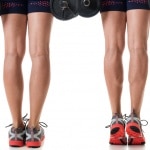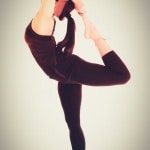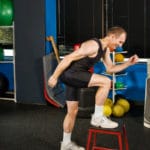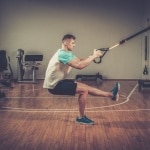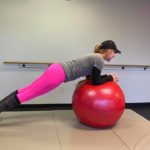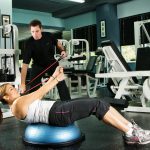July 2021
Whole Body Vibration Boosts Muscle Blood Flow
Whole body vibration (WBV) training broke into the mainstream in the late 1990s with the introduction of affordable platforms that allowed for adjusting the amount of vibration users would receive. In its early days – and STEPS Fitness was one of the early pioneers here in Nashville – WBV was thought to improve bone density, muscle strength, flexibility and even fix your car. Just kidding, but the PR for it was excessive beyond the research on it.
The research community has continued investigating it because there has been sufficient applications in the fitness and clinical setting that show benefits. Since blood flow to and through the muscles is necessary for proper function and overall health, and since microvascular blood flow (MBF) is critical for the exchange of nutrients, an Australian group wanted to see if WBV enhanced MBF.
They had 11 healthy adults perform 3 mins of knee extensions at 25% of the subjects’ maximal capability on an extension machine. By trial and error, they found that a 12.5 Hz vibration setting on the WBV yielded a “similar peripheral hemodynamic response” to the knee extensions and was used for the MBF analyses. The study itself had each subject perform either the lifting exercise or the WBV standing for 3 minutes at a time in a cross-over design.
They found that WBV increased MBF significantly but not to the degree that resistance exercise did, despite “eliciting similar increases in femoral artery blood flow and whole-body oxygen consumption.” For healthy populations, resistance training wins out but for a “therapeutic option for improving microvascular perfusion in at-risk populations”, WBV might be worth investigating.
MSSE Feb. 2021
Whole Egg vs Egg White: Which Makes You Stronger?
If only it was as easy as what you ate, we could all get stronger faster. While we know that ingesting a high-quality protein before but especially after a resistance training (RT) session boosts the synthesis of protein in the muscles used, there is a question as to whether or not the purest of proteins – egg white – is better than whole eggs. The yolk is a nutritious part of an egg but does it detract from the protein absorption lifters want to maximize in order to get stronger and bigger?
To test this, 30 young males were divided into two groups; they all did a whole-body RT program for 12 weeks, three times a week. One group ate 3 whole eggs after the workout plus 3 the next morning; the other had 6 egg whites (more protein plus yolk nutrients) after the session and the next morning. Muscle sizes and strengths, plus body fat and testosterone levels were the comparison measures.
Those eating whole eggs had greater increases in quadriceps and handgrip strength, and testosterone, with more reduction in body fat compared to the egg-white eaters. They also increased lean body mass more than the latter but not significantly. Both groups increased body mass, lean mass of the legs, anaerobic power, growth hormone, insulin, and IGF-1 (beneficial hormones associated with muscle growth). So maybe, just maybe, eating whole eggs, when combined with RT, puts the yolk on you?
JSCR Feb. 2021
Tid Bits
Eating your veggies is a formula for good health, but should you only eat veggies? A study in BMC Medicine (Nov. 2020) found that those who ate vegetarian but especially vegan diets were at increased risk of bone fractures. Compared to meat eaters, vegetarians had about a 25% increased risk of hip fractures; vegans had almost double the risk of one, plus a 43% increased risk for any fracture. So make sure to get more calcium! Arthritis Advisor Mar. 2021
As for vitamin D, well, most Americans are shy of what’s recommended but sometimes more isn’t always better, according to Focus on Healthy Aging (Mar. 2021.) From a study (Annals of Internal Med, Dec. 2020) of 688 people 70 or older, all of whom were at great risk of falling and yet had adequate D levels, supplementing with “doses of 2000 and 4000 IU/day appeared to increase the risk of falls compared with 1000 IU/day” doses. Furthermore, serious falls and those that required hospitalization seemed to occur more in those taking 1000 IU/day or more than in those taking only 200 IU/day.
Sciatica – just the word makes many shiver in fear, and pain. The sciatic nerve exits the lumbar spine on each side, traversing the butt, hamstrings and below the knee, branching off to various leg areas. When pinched or compressed, by a herniated disk or spinal stenosis, it can cause severe pain, tingling, numbness and misery. Physical therapy (PT) is the first medical intervention. A study in the Annals of Internal Medicine (Oct.2020) of 220 people suffering sciatic pain found that those who got PT saw “greater improvements in symptoms” after 6 months compared to those who only had 4 weeks of PT plus educational materials. At a year out, 45% of the PT group declared treatment a success vs 27% of those in the control group. Arthritis Advisor Apr. 2021



